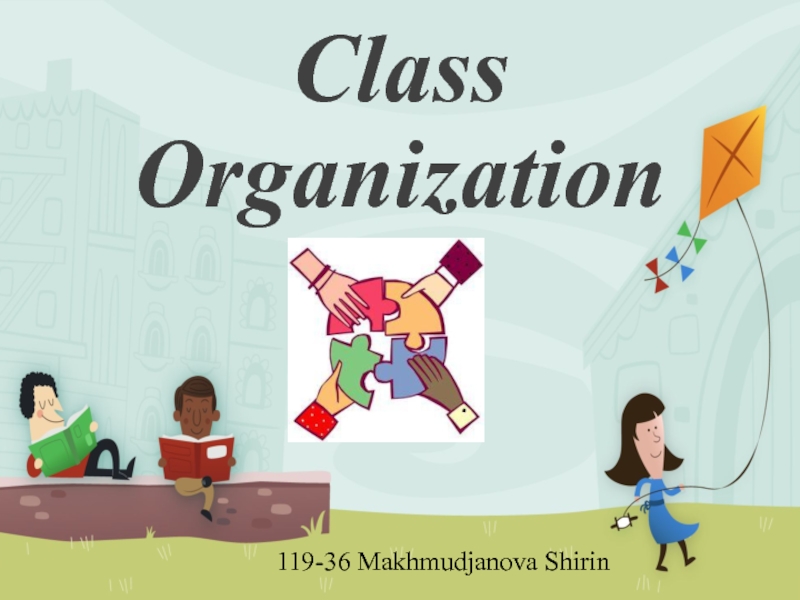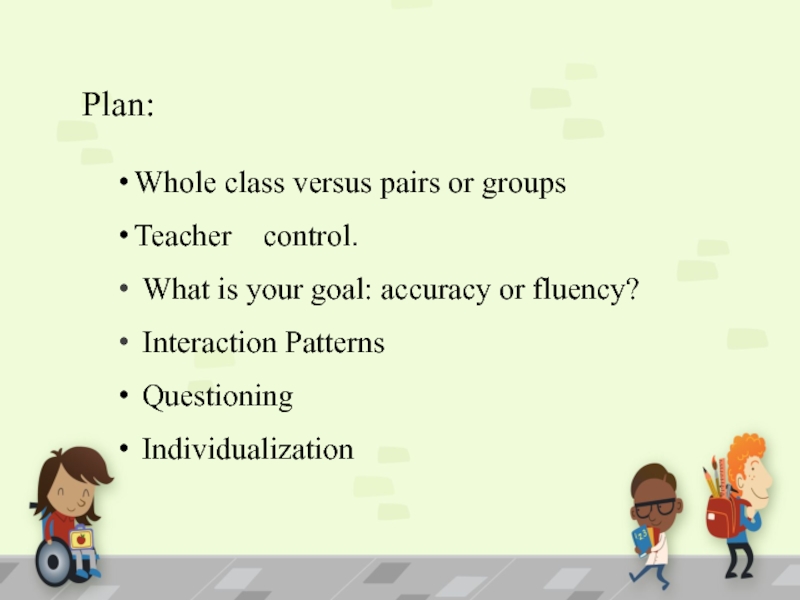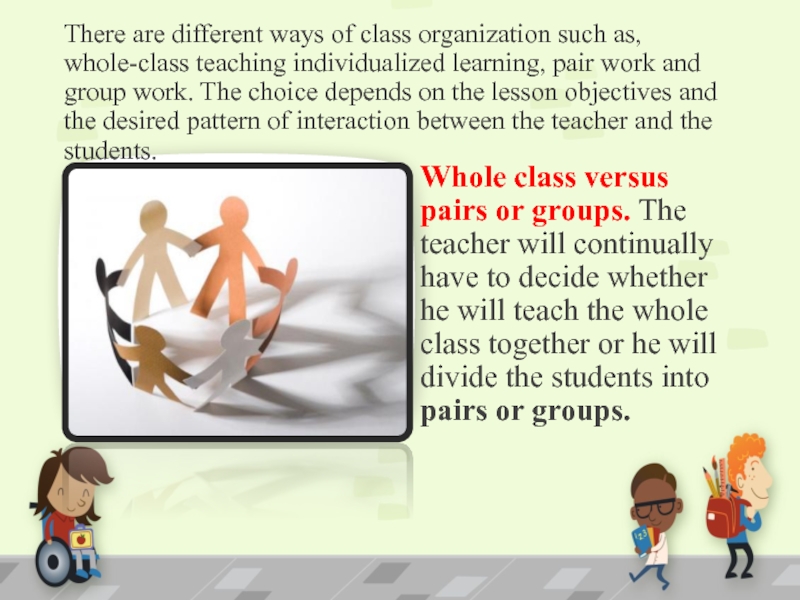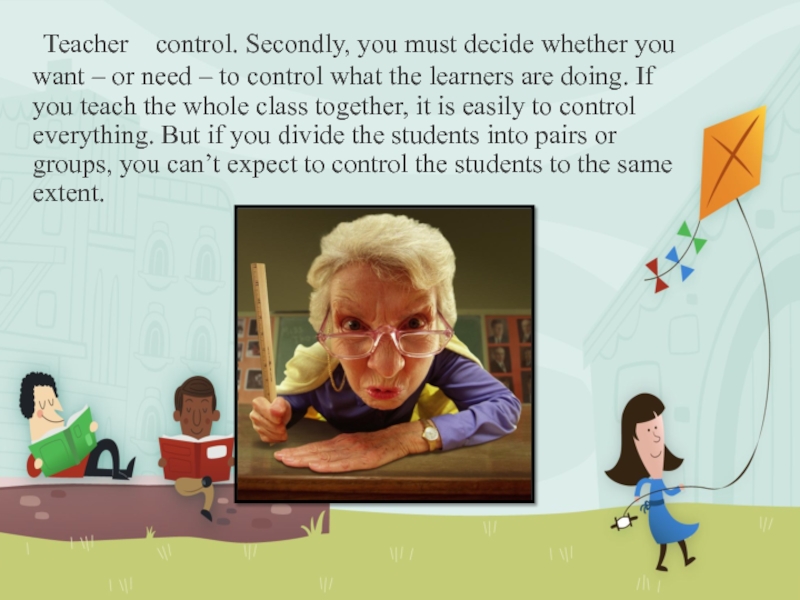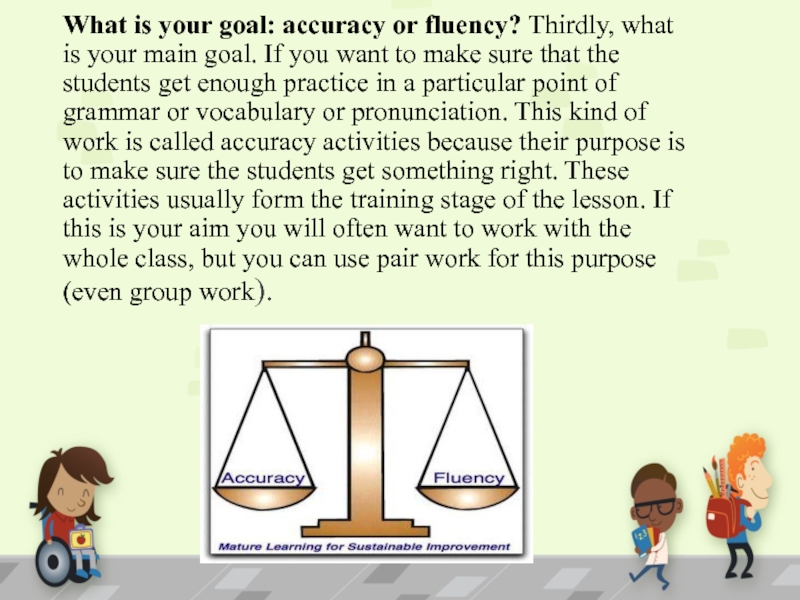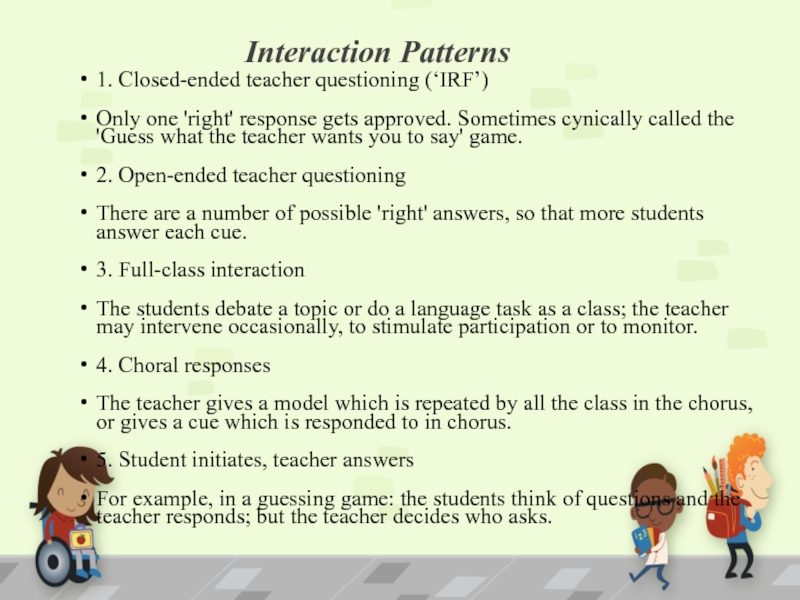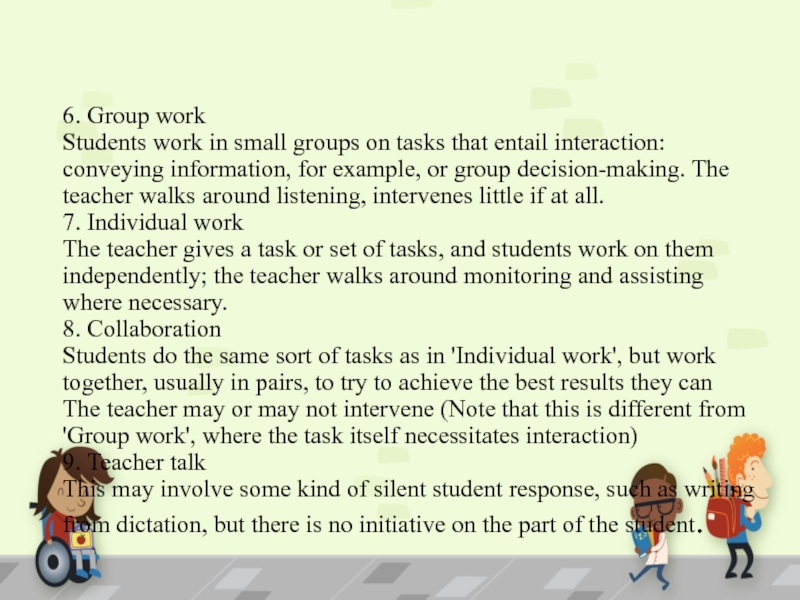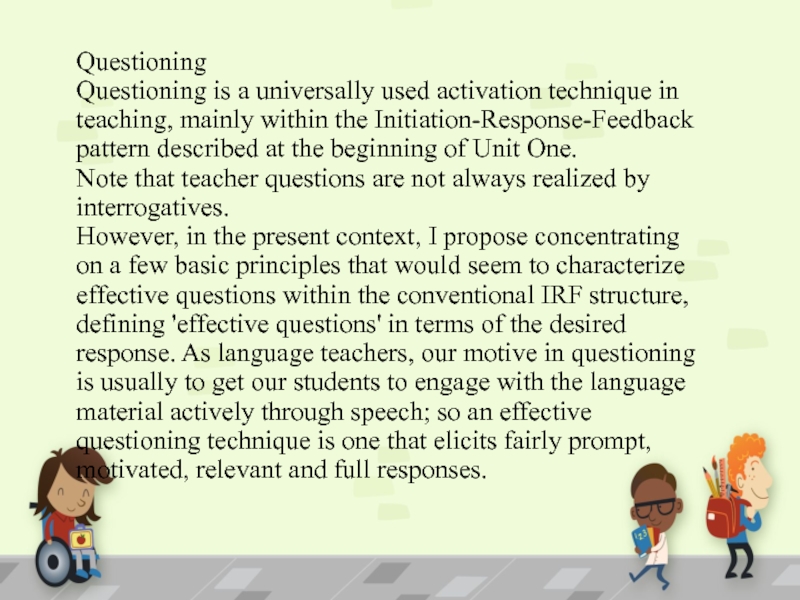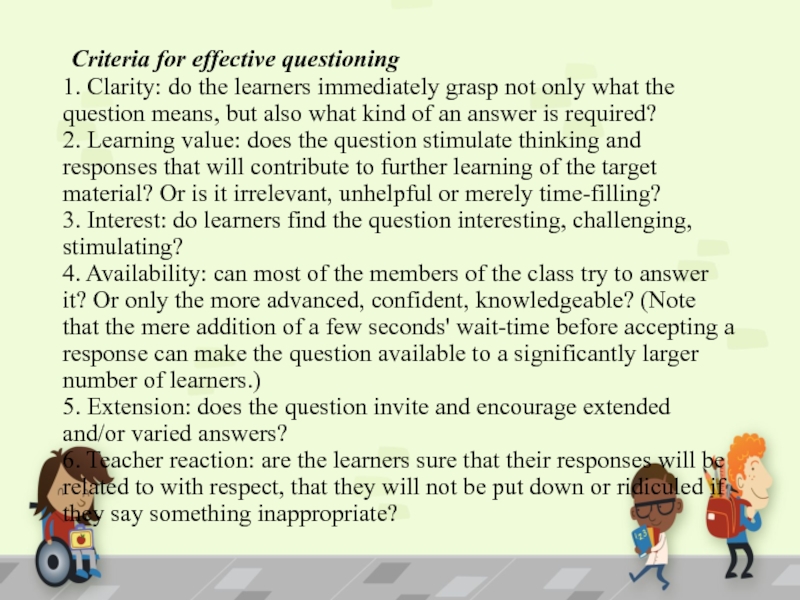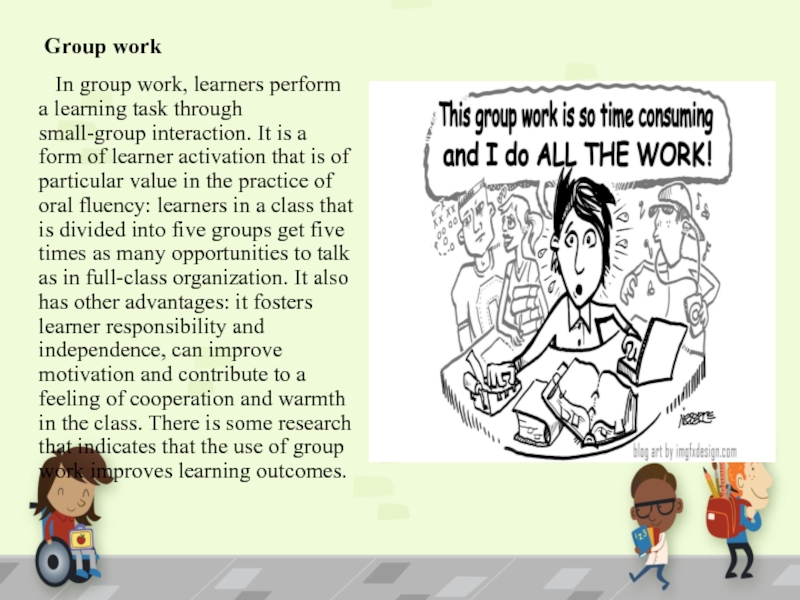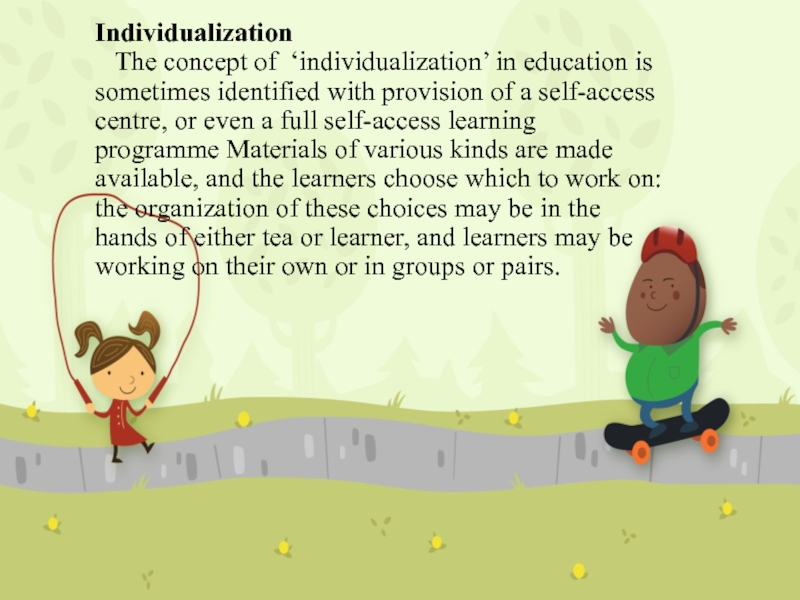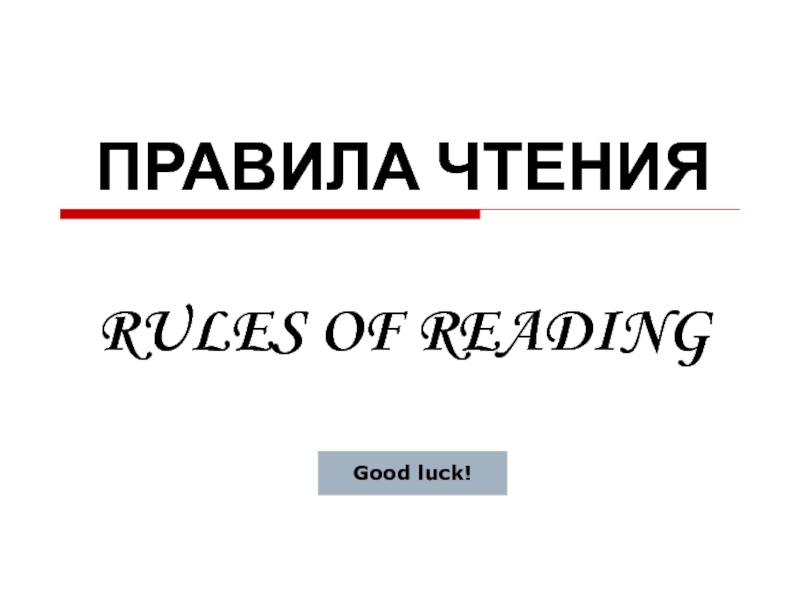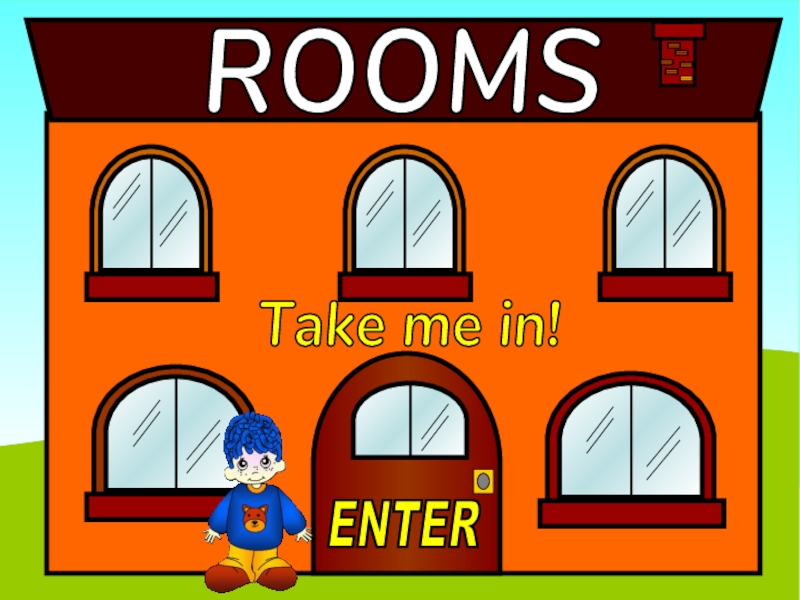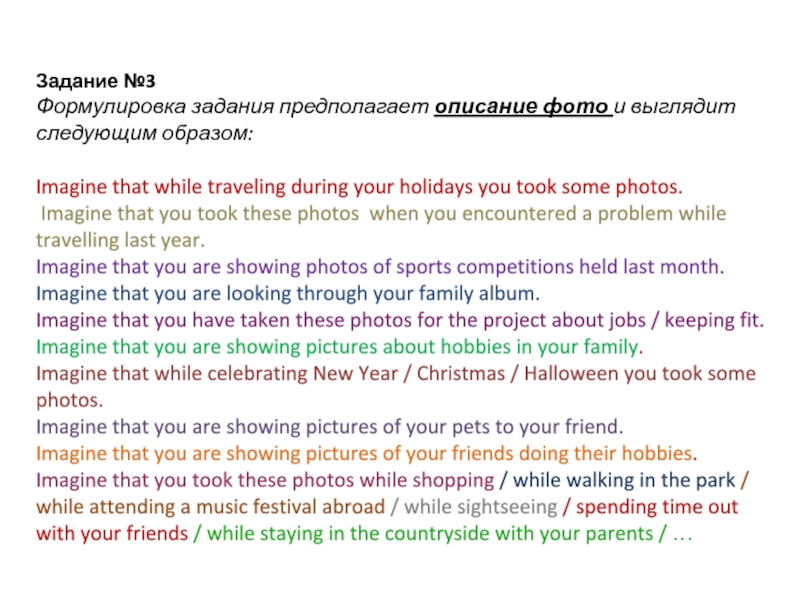- Главная
- Разное
- Дизайн
- Бизнес и предпринимательство
- Аналитика
- Образование
- Развлечения
- Красота и здоровье
- Финансы
- Государство
- Путешествия
- Спорт
- Недвижимость
- Армия
- Графика
- Культурология
- Еда и кулинария
- Лингвистика
- Английский язык
- Астрономия
- Алгебра
- Биология
- География
- Детские презентации
- Информатика
- История
- Литература
- Маркетинг
- Математика
- Медицина
- Менеджмент
- Музыка
- МХК
- Немецкий язык
- ОБЖ
- Обществознание
- Окружающий мир
- Педагогика
- Русский язык
- Технология
- Физика
- Философия
- Химия
- Шаблоны, картинки для презентаций
- Экология
- Экономика
- Юриспруденция
Class Organization презентация
Содержание
- 1. Class Organization
- 2. Plan: Whole class versus pairs or groups
- 3. There are different ways of class organization
- 4. Teacher control. Secondly, you must decide
- 5. What is your goal: accuracy or fluency?
- 6. Interaction Patterns 1. Closed-ended teacher questioning
- 7. 6. Group work Students work in small
- 8. Questioning Questioning is a universally used activation
- 9. Criteria for effective questioning 1. Clarity:
- 10. Group work In group
- 11. Individualization The concept of
Слайд 2Plan:
Whole class versus pairs or groups
Teacher control.
What is your goal:
accuracy or fluency?
Interaction Patterns
Questioning
Individualization
Interaction Patterns
Questioning
Individualization
Слайд 3There are different ways of class organization such as, whole-class teaching
individualized learning, pair work and group work. The choice depends on the lesson objectives and the desired pattern of interaction between the teacher and the students.
Whole class versus pairs or groups. The teacher will continually have to decide whether he will teach the whole class together or he will divide the students into pairs or groups.
Слайд 4 Teacher control. Secondly, you must decide whether you want – or
need – to control what the learners are doing. If you teach the whole class together, it is easily to control everything. But if you divide the students into pairs or groups, you can’t expect to control the students to the same extent.
Слайд 5What is your goal: accuracy or fluency? Thirdly, what is your
main goal. If you want to make sure that the students get enough practice in a particular point of grammar or vocabulary or pronunciation. This kind of work is called accuracy activities because their purpose is to make sure the students get something right. These activities usually form the training stage of the lesson. If this is your aim you will often want to work with the whole class, but you can use pair work for this purpose (even group work).
Слайд 6Interaction Patterns
1. Closed-ended teacher questioning (‘IRF’)
Only one 'right' response gets approved.
Sometimes cynically called the 'Guess what the teacher wants you to say' game.
2. Open-ended teacher questioning
There are a number of possible 'right' answers, so that more students answer each cue.
3. Full-class interaction
The students debate a topic or do a language task as a class; the teacher may intervene occasionally, to stimulate participation or to monitor.
4. Choral responses
The teacher gives a model which is repeated by all the class in the chorus, or gives a cue which is responded to in chorus.
5. Student initiates, teacher answers
For example, in a guessing game: the students think of questions and the teacher responds; but the teacher decides who asks.
2. Open-ended teacher questioning
There are a number of possible 'right' answers, so that more students answer each cue.
3. Full-class interaction
The students debate a topic or do a language task as a class; the teacher may intervene occasionally, to stimulate participation or to monitor.
4. Choral responses
The teacher gives a model which is repeated by all the class in the chorus, or gives a cue which is responded to in chorus.
5. Student initiates, teacher answers
For example, in a guessing game: the students think of questions and the teacher responds; but the teacher decides who asks.
Слайд 76. Group work Students work in small groups on tasks that entail
interaction: conveying information, for example, or group decision-making. The teacher walks around listening, intervenes little if at all.
7. Individual work
The teacher gives a task or set of tasks, and students work on them independently; the teacher walks around monitoring and assisting where necessary.
8. Collaboration
Students do the same sort of tasks as in 'Individual work', but work together, usually in pairs, to try to achieve the best results they can The teacher may or may not intervene (Note that this is different from 'Group work', where the task itself necessitates interaction)
9. Teacher talk
This may involve some kind of silent student response, such as writing from dictation, but there is no initiative on the part of the student.
Слайд 8Questioning Questioning is a universally used activation technique in teaching, mainly within
the Initiation-Response-Feedback pattern described at the beginning of Unit One.
Note that teacher questions are not always realized by interrogatives.
However, in the present context, I propose concentrating on a few basic principles that would seem to characterize effective questions within the conventional IRF structure, defining 'effective questions' in terms of the desired response. As language teachers, our motive in questioning is usually to get our students to engage with the language material actively through speech; so an effective questioning technique is one that elicits fairly prompt, motivated, relevant and full responses.
Слайд 9 Criteria for effective questioning 1. Clarity: do the learners immediately grasp
not only what the question means, but also what kind of an answer is required?
2. Learning value: does the question stimulate thinking and responses that will contribute to further learning of the target material? Or is it irrelevant, unhelpful or merely time-filling?
3. Interest: do learners find the question interesting, challenging, stimulating?
4. Availability: can most of the members of the class try to answer it? Or only the more advanced, confident, knowledgeable? (Note that the mere addition of a few seconds' wait-time before accepting a response can make the question available to a significantly larger number of learners.)
5. Extension: does the question invite and encourage extended and/or varied answers?
6. Teacher reaction: are the learners sure that their responses will be related to with respect, that they will not be put down or ridiculed if they say something inappropriate?
Слайд 10 Group work
In group work, learners perform a learning
task through small-group interaction. It is a form of learner activation that is of particular value in the practice of oral fluency: learners in a class that is divided into five groups get five times as many opportunities to talk as in full-class organization. It also has other advantages: it fosters learner responsibility and independence, can improve motivation and contribute to a feeling of cooperation and warmth in the class. There is some research that indicates that the use of group work improves learning outcomes.
Слайд 11Individualization The concept of ‘individualization’ in education is sometimes
identified with provision of a self-access centre, or even a full self-access learning programme Materials of various kinds are made available, and the learners choose which to work on: the organization of these choices may be in the hands of either tea or learner, and learners may be working on their own or in groups or pairs.
